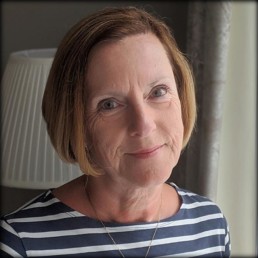
Written by Dr Jill Berry
Thirty years teaching across six different schools in the UK, state and independent, and was a head for the last ten. Has since completed a doctorate and written a book.
This book is a collaborative tour de force. Rarely have I read anything which has made me think as much as this book has. Tapping into the experiences of a wide range of writers whose lives have been, in so many ways, quite different from my own, has been sobering, humbling but ultimately energising. This book deserves to be widely read, robustly discussed and, crucially, its key messages need to be acted upon so that we work to change our world for the better – for everyone.
I appreciate that this is not necessarily a book most people would read from cover to cover. It is a weighty tome! It devotes one section to each of the nine protected characteristics, adds a chapter on intersectionality, a prologue and an epilogue. It is an amazing accomplishment, bringing together the views of 125 contributors, including the ten chapter editors, and Hannah and Bennie, who all share their stories and their perspectives. The book goes far beyond the exploration of personal stories, however.
I imagine that many people would identify a specific section, or several sections, about which they wished to develop their knowledge and understanding, and would focus on that part of the book. But I want to advocate for reading it all. Even if you feel that there are certain characteristics that you believe you fully understand and appreciate – perhaps you share them – I suggest that every section has something to teach us. And as you make your way through each separate section, you appreciate the connections, the echoes and the common ground, reinforcing the essential humanity which underpins this story of ‘difference’. As Bennie says in our Myatt & Co interview about the book: ‘No-one is just one thing.’
The range of contributors is one of the reasons this book resonates. Different contributors ranging from teenagers to the considerably more mature contingent; UK and overseas perspectives; primary, secondary and FE educators; state and independent sector teachers and leaders; many who share a number of protected characteristics offer their experiences, views and their own learning with generosity, honesty and courage.
Many of the stories are strongly grounded in research, and the book contains a great number of references, on which the contributors draw and which they share for those who wish to explore further through additional reading. It is also eminently practical, with key takeaways, key questions and specific commitments at the end of each chapter and a final section in which Bennie and Hannah make clear how readers can act on their reflections as they have worked through the different sections and what they have learnt as a result. They exhort us to consider: what difference will this make? It made me think of Zoe and Mark Enser’s words in ‘The CPD Curriculum’: “CPD does not happen through a particular input of information; CPD occurs through what happens next.” When you get to the end of the book, you are strongly encouraged to think about what action you will take as a result of the experience.
I strongly recommend ‘Diverse Educators: A Manifesto’. Bennie Kara’s words in the epilogue mirrored perfectly my own response to the book: “Throughout the book, I have been struck by the honesty of the contributing authors… I have seen in the writing parts of myself – feelings, thoughts and experiences that have served to demonstrate how we as education professionals have complex and interweaving experiences…In reading these chapters, even if I do not share a particular person’s protected characteristic, I have recognised the intensely human need to be heard.”
I would encourage you to make the time to read the whole book. I am confident that you won’t regret it.

